Search the Special Collections and Archives Portal
Search Results
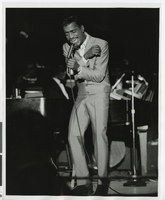
Photograph of Sammy Davis, Jr. performing in the Copa Room at the Sands Hotel, Las Vegas, 1966
Date
Archival Collection
Description
Sammy Davis Jr. performing in the Copa Room at the Sands Hotel in 1966.
Image
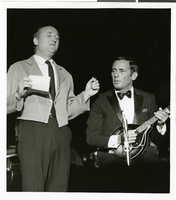
Photograph of Joey Bishop playing the mandolin at the Sands Hotel, Las Vegas, August 1965
Date
Archival Collection
Description
Joey Bishop playing mandolin onstage at the Copa Room in the Sands Hotel, August 1965.
Image
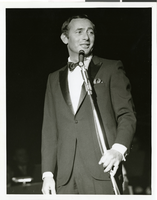
Photograph of Joey Bishop onstage at the Copa Room in the Sands Hotel, Las Vegas, August 1965
Date
Archival Collection
Description
Joey Bishop at the microphone in the Copa Room of the Sands Hotel in August 1965.
Image
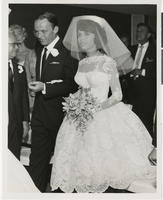
Photograph of Frank Sinatra walking his daughter, Nancy, down the aisle, Las Vegas, September 11, 1960
Date
Archival Collection
Description
Frank Sinatra walking his daughter, Nancy Sinatra, down the aisle prior to her marriage to Tommy Sands. The wedding was held at the Sands Hotel on September 11, 1960.
Image
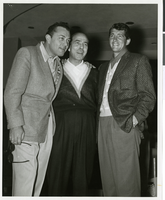
Photograph of Tony Martin and Dean Martin at the Sands Hotel, Las Vegas, circa 1960s
Date
Archival Collection
Description
Pictured from left to right are singer Tony Martin, an unidentified man, and Dean Martin at the Sands Hotel in the 1960s.
Image
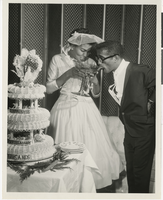
Photograph of Sammy Davis, Jr. and Loray White at their wedding reception, Las Vegas, January 10, 1958
Date
Archival Collection
Description
Sammy Davis, Jr. and Loray White at their wedding, which took place at the Sands Hotel on January 10, 1958.
Image
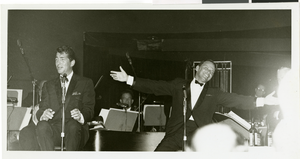
Photograph of Dean Martin and Frank Sinatra on opening night at the Copa Room, Las Vegas, January 1964
Date
Archival Collection
Description
Dean Martin (left) and Frank Sinatra (right, arms extended) on opening night at the Copa Room in the Sands Hotel, January 1964.
Image
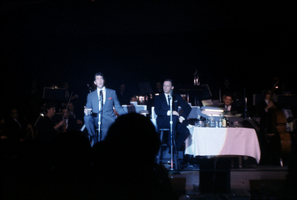
Slide transparency of Dean Martin and Frank Sinatra onstage at the Copa Room in the Sands Hotel, Las Vegas, February 1963
Date
Archival Collection
Description
Dean Martin (left) and Frank Sinatra performing at the Copa Room in the Sands Hotel in February 1963.
Image
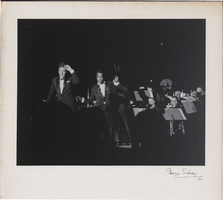
Photograph of Peter Lawford and Sammy Davis, Jr. performing at the Sands Hotel, Las Vegas, 1960
Date
Archival Collection
Description
Peter Lawford and Sammy Davis, Jr. onstage at the Copa Room in the Sands Hotel, 1960.
Image
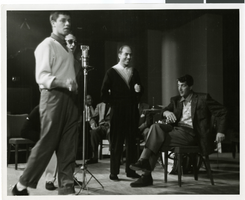
Photograph of Jerry Lewis and Dean Martin recording a radio program, Las Vegas, circa 1950s
Date
Archival Collection
Description
Jerry Lewis (standing at left) and Dean Martin (seated at right) recording a radio program for ABC.
Image
